This post may contain affiliate links. As an Amazon Influencer, I earn from qualifying purchases.
Once you know how to cook spaghetti squash WHOLE using a slow cooker or by roasting it in the oven, you'll never put off making amazing (and healthy) spaghetti squash recipes again. The hard part will be done...and there's no difficult cutting involved!
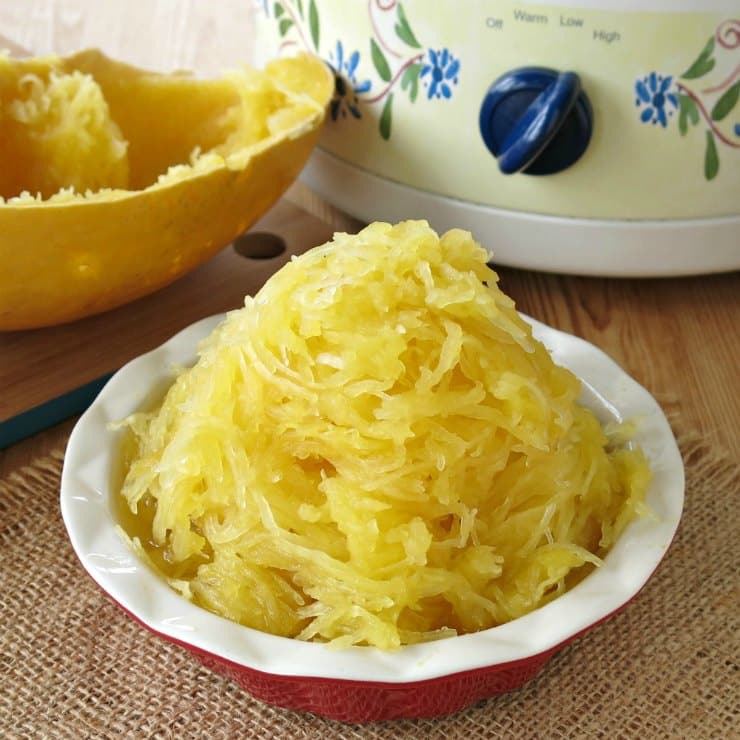
Spaghetti squash is nature's answer to low-carb, gluten-free "noodles." Of course, they don't taste like pasta at all. They're actually kind of bland...until you season and mix them with other ingredients. That's when the magic happens.
Recipes like Spaghetti Squash Pizza Crust, Spaghetti Squash Au Gratin, and Spaghetti Squash Soup will make the regular dinner rotation once you have this easy process down!
Traditionally, spaghetti squash is cooked by cutting the gourd in half and roasting it in the oven, as we did for Spaghetti Squash Alfredo. I'm certainly not against this method! It delivers a nice flavor especially if it's brushed with olive oil and seasoned.
But, I do NOT like risking life and limb to cut the squash in half. Luckily, there are easier ways to cook spaghetti squash! Actually, there are 2 methods that I use all the time and neither one requires you to cut anything until the skin is soft to touch!
And, in case you're wondering, similar processes work for crock-pot butternut squash and acorn squash too! You'll find all of these hacks in our cooking tips and guides.
Jump to:
Slow Cooker Spaghetti Squash - Whole
The crock-pot provides maximum flexibility when cooking spaghetti squash. Depending upon your time constraints it can be cooked on low or on high. The time frame is very forgiving too!
Wash the outside of the spaghetti squash. Next, stab the skin all over with a knife to allow steam to escape during the cooking process.
For a medium-sized squash, stab it at least 10-12 times. You don't need to insert the knife very deep either...using just the tip (about ½ inch) is sufficient.
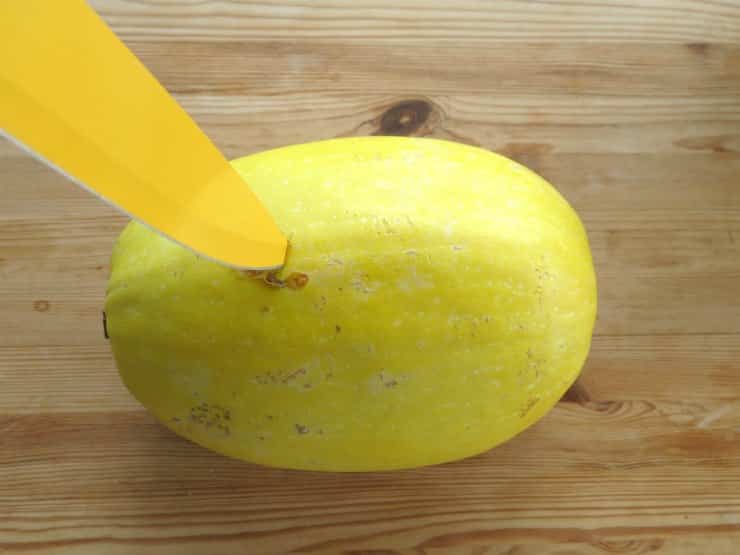
Place spaghetti squash in the slow cooker and cook on low for 5-6 hours or on high for 3-4 hours.
Squash is done when the outside can be easily pierced with a knife. The exact time will vary depending upon the size and shape of the spaghetti squash.
Allow it to cool for about 10 minutes and then lift it to a cutting board with oven mitts or a dish towel.
Cut the gourd in half, remove the seeds, and then use a fork to loosen the strands of flesh.
Tip: When buying spaghetti squash, make sure the gourd will comfortably fit in your slow cooker!
Baked Spaghetti Squash - Whole
Whole spaghetti squash can also be baked in the oven. Preheat the oven to 425 degrees Fahrenheit. Wash and prick the outside skin of the squash with a knife. Place it on a sturdy sheet pan and cook for about 30 minutes, rolling it over halfway through.
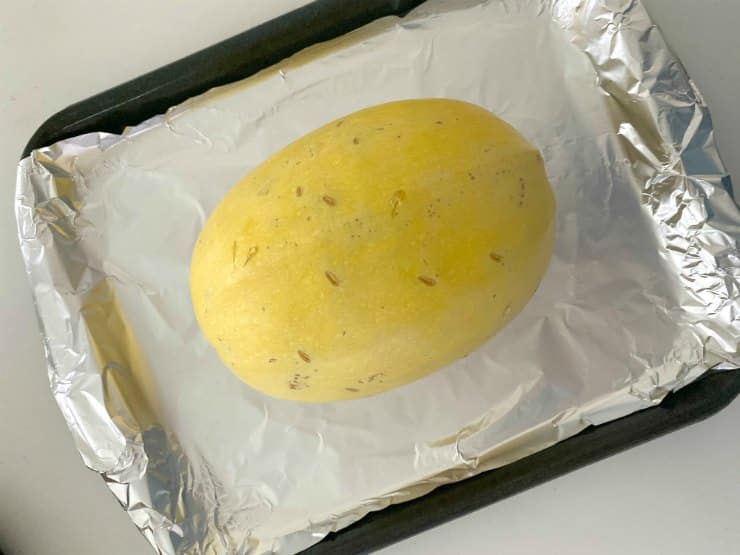
Allow it to cool. The spaghetti squash will continue to cook slightly during this time. Using pot holders, remove it to a cutting board.
Cut the spaghetti squash in half, remove all seeds, and then use a fork to remove strands.
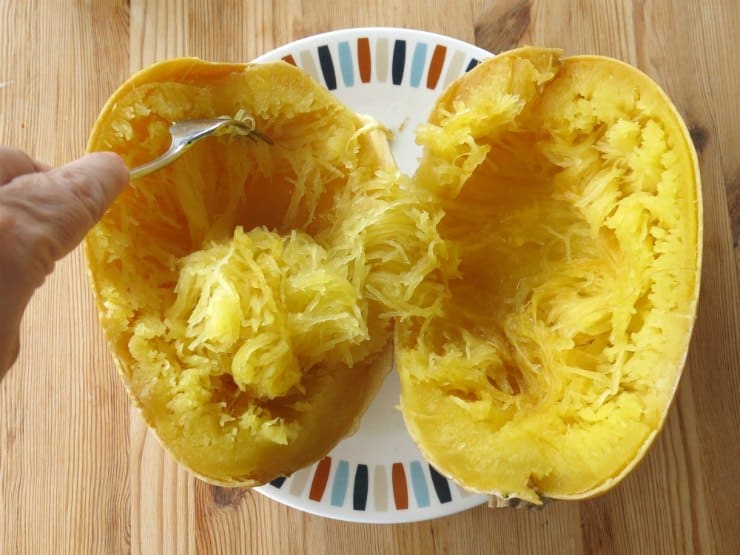
Which direction should you cut spaghetti squash?
For long pasta-like strands, cut the spaghetti squash in half crosswise. The strands grow in this circular direction and will be long. This cut is perfect for dishes where the strands stand in for spaghetti noodles, such as in spaghetti squash marinara.

For shorter strands, cut the spaghetti squash in half longways, which generally works for any recipe.
Frequently Asked Questions about cooking Whole Spaghetti Squash
Here are some of the most frequently asked questions about this cooking spaghetti squash whole:
Yes. Always wash the outside of the gourd first to remove dirt and germs.
The gourd should not explode if cuts are made to allow steam to escape. Make plenty of cuts all over the gourd.
It's a matter of preference. Strands of spaghetti squash that are crisp have not been cooked as long as ones that are not. Both are edible. If you will be cooking the spaghetti squash further in a casserole or other dish, then crunchy is perfectly fine.
Return spaghetti squash to the oven or slow cooker, even after it has been cut in half, to cook it longer if necessary.
Use a knife to poke the skin and test for doneness. If the knife is easily inserted into the flesh, then the spaghetti squash is ready to come out.
I've only cooked it briefly in order to soften the skin so it's easier to cut. However, the Jaden over at The Steamy Kitchen has. Check out How to Cook Spaghetti Squash in the Microwave.
You can add up to a cup of water to the bottom of a slow cooker, but you don't have to. We do not take this step.
Storage
Spaghetti squash can be cooked days before you want to use it, making dinner preparation easy!
Refrigerator
Store cooked spaghetti squash noodles in an air-tight container or bag in the refrigerator for up to 5 days.
Freezer
Stored cooked spaghetti squash noodles in a freezer-safe container or bag for up to 3 months in the freezer. When you're ready to enjoy the spaghetti squash, remove the storage container to the refrigerator to defrost.
Defrosted noodles can be reheated on the stove-top, in a microwave or use in your favorite recipe.
If spaghetti squash "noodles" are too watery, place them in a strainer and press out the extra liquid. We use this trick a lot...see it in action for Spinach and Feta Muffins!

How to use Cooked Spaghetti Squash
So...what are you going to do with all that spaghetti squash? Check out this ever-growing list of ideas:
- Season with salt, pepper
- Stir in pesto and top with chicken, shrimp, or your favorite protein.
- Stir in marinara and top with meatballs and parmesan cheese
Or make one of these healthy recipes:
Would you like more easy, healthy, carb-conscious recipes?
📋 Recipe
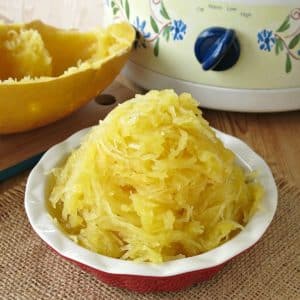
Cook Spaghetti Squash Whole (Slow Cooker or Oven)
Equipment
Ingredients
- 1 spaghetti squash medium; about 2-3 pounds
- salt and pepper to taste
Instructions
- Wash outside of the spaghetti squash.
- Stab all over the outside gourd with a knife to allow steam to escape while cooking. Insert tip about ½ inch. Make at least 10 cuts or more for larger gourds.
Slow Cooker
- Place whole spaghetti squash in a slow cooker and cover with lid.
- Cook on low for 5-6 hours or high for 3-4 hours. Time will vary based on the size and shape of the spaghetti squash. When a knife can be inserted into the skin with little effort it is done.
- Allow spaghetti squash to cool for about 10 minutes and remove to a cutting board using oven mitts or a towel.
- Cut spaghetti squash in half and remove seeds. Scrape spaghetti squash strands from the gourd with a fork.
- Season with salt and pepper and enjoy or use in a recipe.
Roast in Oven
- Preheat oven to 425 degrees Fahrenheit.
- Place whole spaghetti squash on a sturdy baking sheet.
- Roast for about 30 minutes, rolling over halfway through
- Allow spaghetti squash to cool for about 10 minutes and remove to a cutting board using oven mitts or a towel.
- Cut spaghetti squash in half and remove seeds. Scrape spaghetti squash strands from the gourd with a fork.
- Season with salt and pepper and enjoy or use in a recipe.
Notes
- When buying spaghetti squash, make sure the gourd will comfortably fit in your slow cooker!
- For long pasta-like strands, cut the spaghetti squash in half crosswise. For shorter strands cut it lengthwise. See pictures above.
- Return spaghetti squash to the oven or slow cooker, even after it has been cut in half, to cook it longer if necessary.
- Store cooked spaghetti squash noodles in an air-tight container or bag in the refrigerator for up to 5 days.
- Stored cooked spaghetti squash noodles in a freezer-safe container or bag for up to 3 months in the freezer. When you're ready to enjoy the spaghetti squash, remove the storage container to the refrigerator to defrost.
- Defrosted noodles can be reheated on the stove-top, in a microwave or use them in your favorite recipe.
- If the spaghetti squash is too watery, place it in a strainer and press out the extra liquid.

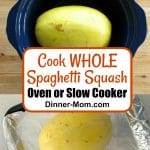

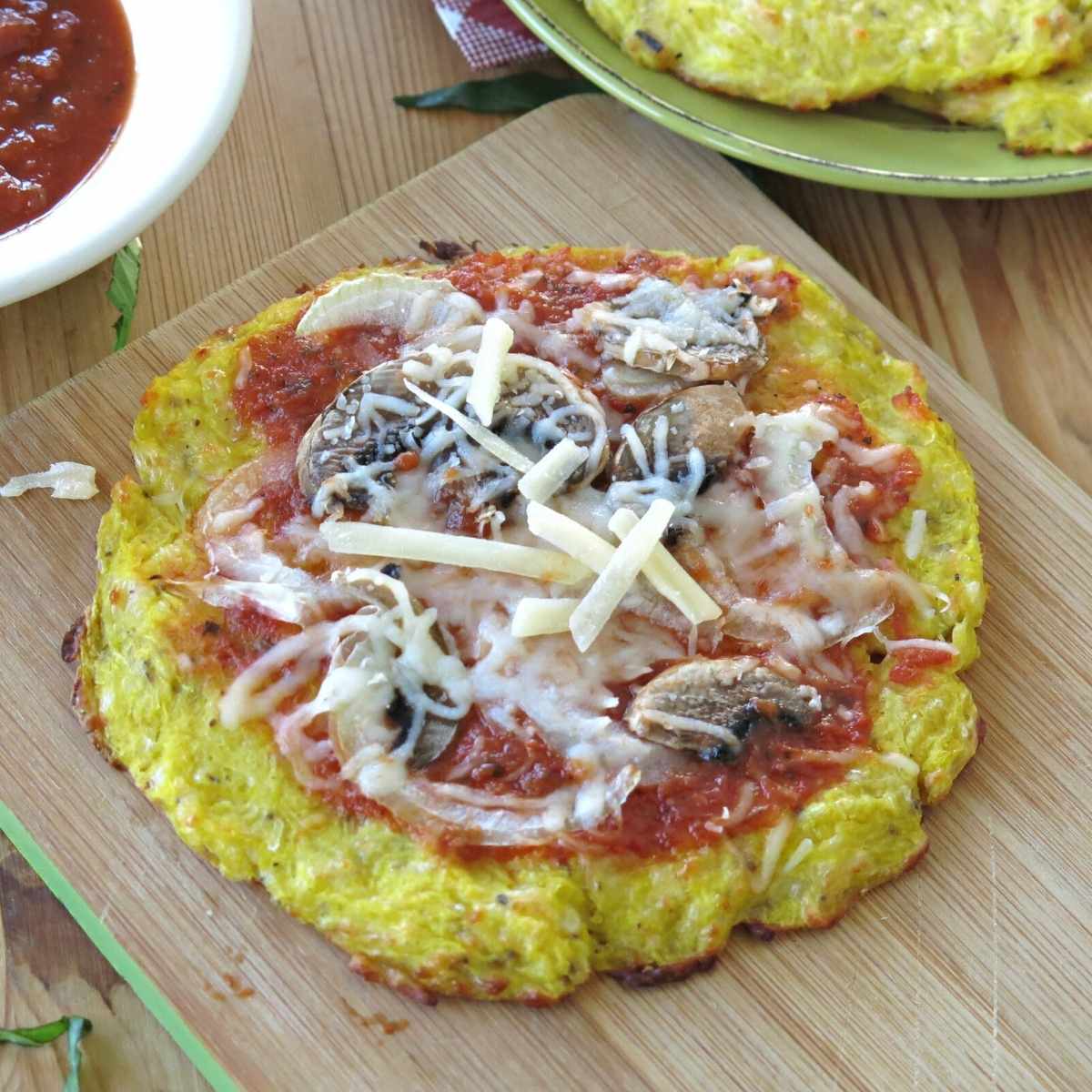
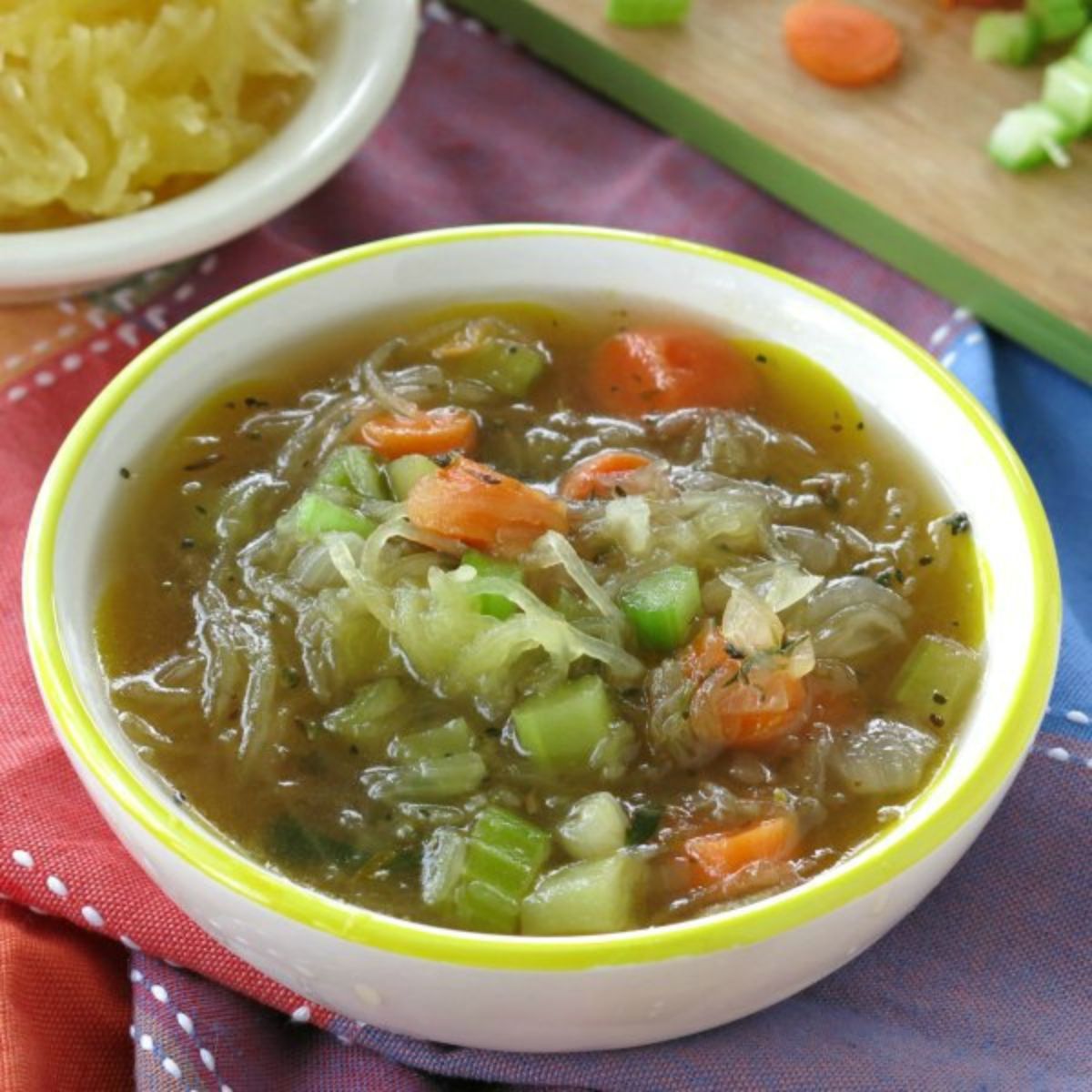
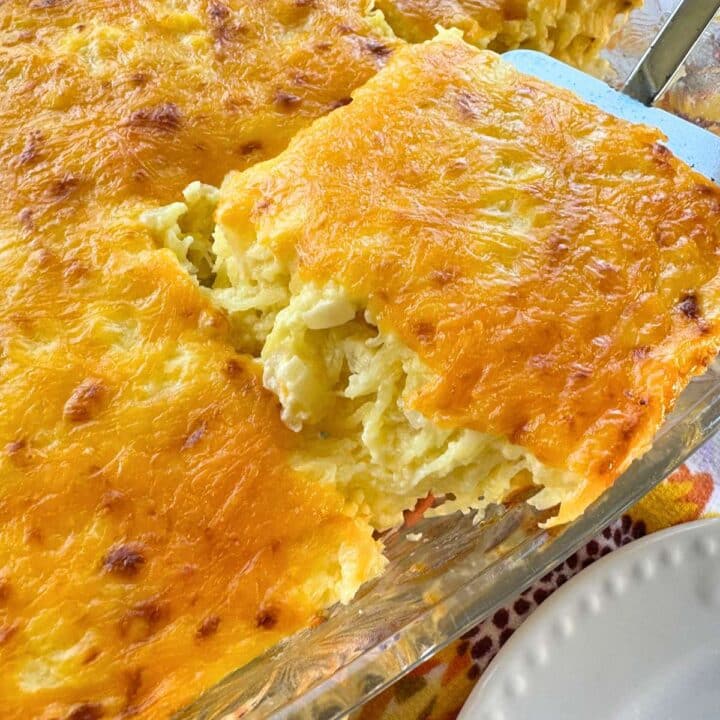
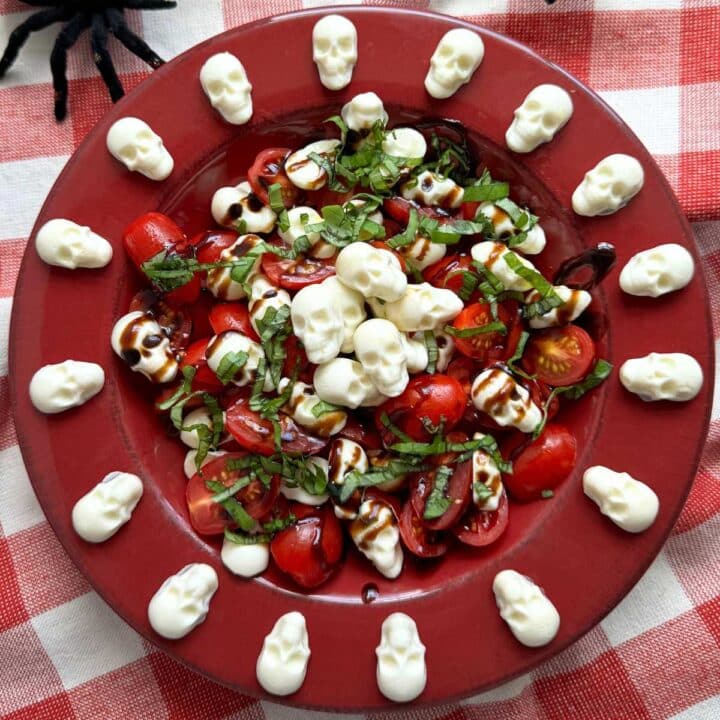


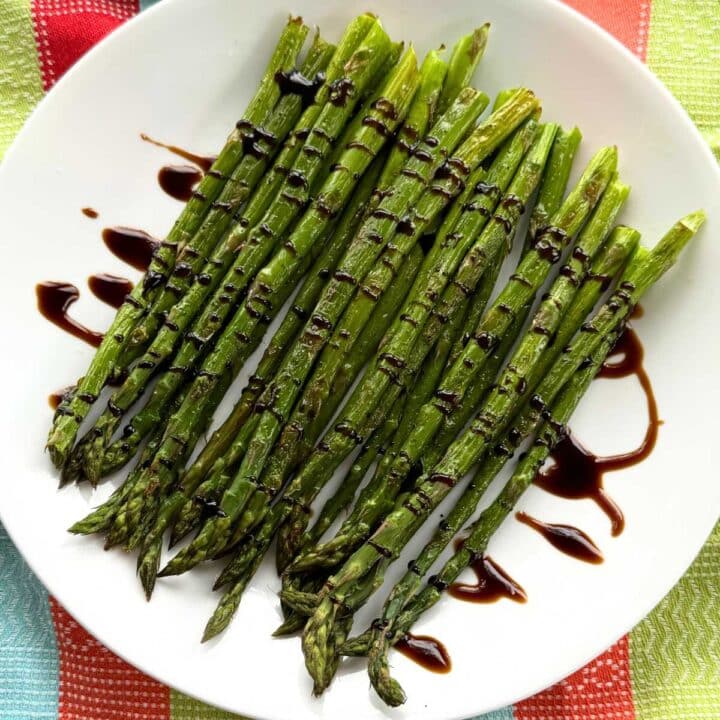
Essie says
Recipe directions are easy to follow.
Allison says
I had never tried it in the slow cooker before. This will be my go-to way. Thanks for sharing!
Jennifer Banz says
I'm a big fan of Spaghetti Squash! Thanks for sharing!